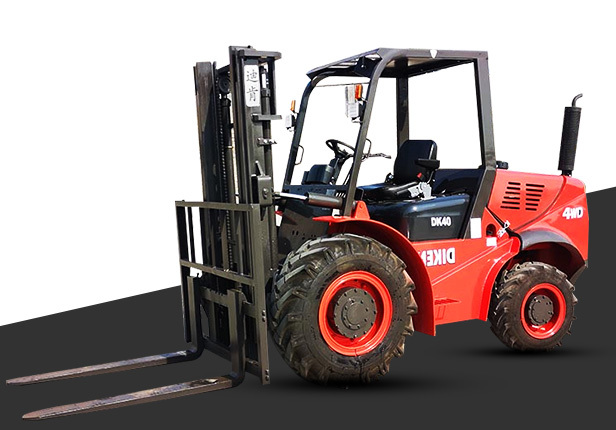Diken news
Mastering the Terrain: Understanding Rough Terrain Forklifts and Their Applications
Release time: 2025-07-25
Rough terrain forklifts are specialized machines designed to operate in rugged outdoor environments, making them essential for industries that deal with uneven surfaces, such as construction, agriculture, and landscaping. These forklifts are equipped with powerful engines and large, robust tires that enable them to navigate challenging terrains, including mud, gravel, and uneven ground. Understanding the features and advantages of rough terrain forklifts can help businesses optimize their material handling processes in environments that standard forklifts cannot access.
One of the key features of rough terrain forklifts is their exceptional ground clearance. This allows them to traverse obstacles without getting stuck, which is particularly important when moving heavy loads across uneven surfaces. Additionally, these forklifts usually come with four-wheel drive capabilities, providing enhanced traction and stability on difficult terrains. This feature not only helps to prevent accidents but also improves the overall efficiency of operations.
Another important aspect of rough terrain forklifts is their lifting capacity. These machines are designed to handle heavy loads, often ranging from 5,000 to 10,000 pounds or more, depending on the model. This makes them suitable for transporting a variety of materials, from construction supplies to agricultural products, even in challenging outdoor conditions. The versatility of rough terrain forklifts allows businesses to undertake a wide range of projects without the need for multiple types of equipment.
Moreover, rough terrain forklifts are designed with a greater emphasis on operator safety and comfort. Many models feature spacious cabs with enhanced visibility, allowing operators to maintain awareness of their surroundings while maneuvering in complex environments. Safety features such as stability systems and rollover protection further enhance safe operation, making these forklifts a reliable choice for outdoor tasks.
In addition to their robust design and operational efficiency, rough terrain forklifts can contribute to considerable cost savings for businesses. Their ability to perform in environments where traditional forklifts fail can reduce downtime and the need for additional equipment, ultimately leading to increased productivity.
In conclusion, understanding the capabilities of rough terrain forklifts is crucial for professionals in industries that require efficient material handling in challenging environments. Their unique features, such as high ground clearance, powerful lifting capacities, and safety enhancements, make them indispensable tools for optimizing operations on uneven surfaces. As businesses seek to enhance productivity and ensure safety, rough terrain forklifts stand out as a vital asset in the transportation and warehousing sectors.
One of the key features of rough terrain forklifts is their exceptional ground clearance. This allows them to traverse obstacles without getting stuck, which is particularly important when moving heavy loads across uneven surfaces. Additionally, these forklifts usually come with four-wheel drive capabilities, providing enhanced traction and stability on difficult terrains. This feature not only helps to prevent accidents but also improves the overall efficiency of operations.
Another important aspect of rough terrain forklifts is their lifting capacity. These machines are designed to handle heavy loads, often ranging from 5,000 to 10,000 pounds or more, depending on the model. This makes them suitable for transporting a variety of materials, from construction supplies to agricultural products, even in challenging outdoor conditions. The versatility of rough terrain forklifts allows businesses to undertake a wide range of projects without the need for multiple types of equipment.
Moreover, rough terrain forklifts are designed with a greater emphasis on operator safety and comfort. Many models feature spacious cabs with enhanced visibility, allowing operators to maintain awareness of their surroundings while maneuvering in complex environments. Safety features such as stability systems and rollover protection further enhance safe operation, making these forklifts a reliable choice for outdoor tasks.
In addition to their robust design and operational efficiency, rough terrain forklifts can contribute to considerable cost savings for businesses. Their ability to perform in environments where traditional forklifts fail can reduce downtime and the need for additional equipment, ultimately leading to increased productivity.
In conclusion, understanding the capabilities of rough terrain forklifts is crucial for professionals in industries that require efficient material handling in challenging environments. Their unique features, such as high ground clearance, powerful lifting capacities, and safety enhancements, make them indispensable tools for optimizing operations on uneven surfaces. As businesses seek to enhance productivity and ensure safety, rough terrain forklifts stand out as a vital asset in the transportation and warehousing sectors.
Keywords: rough terrain forklift









